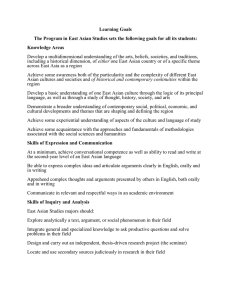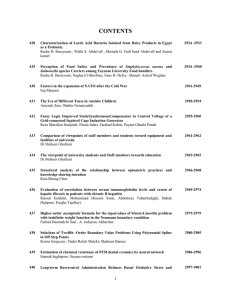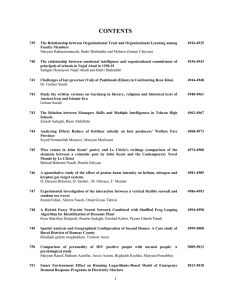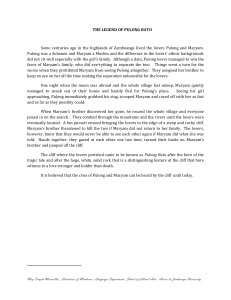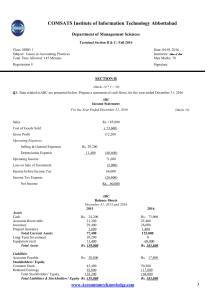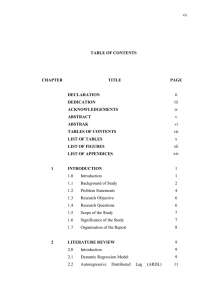Proceedings of World Business and Economics Research Conference
advertisement
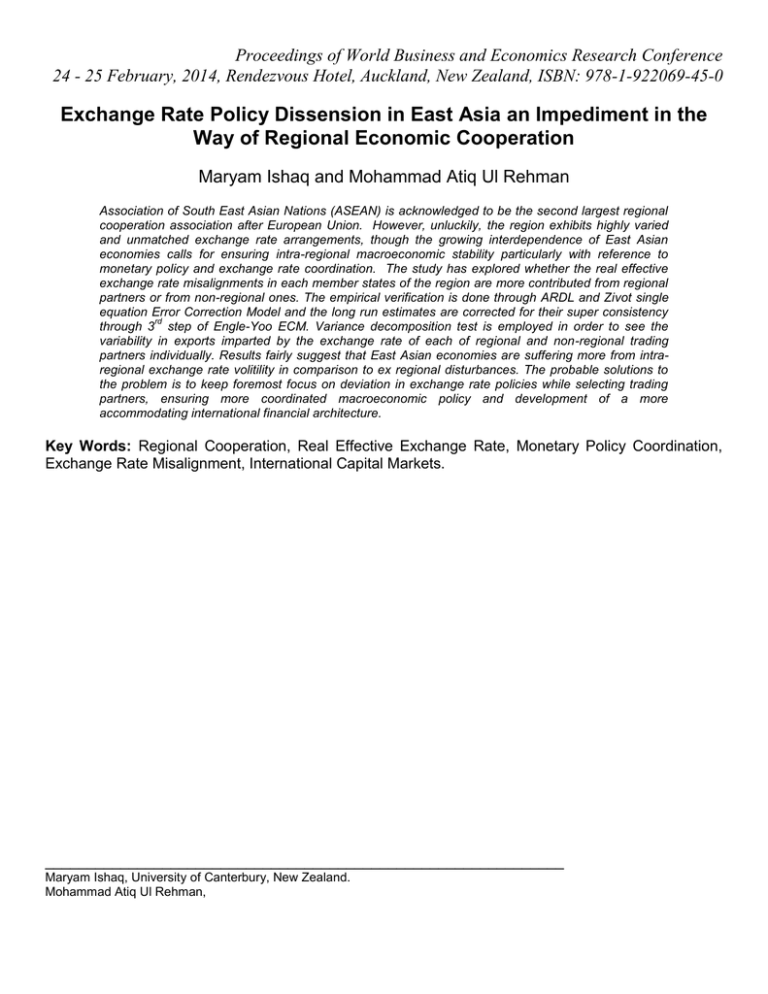
Proceedings of World Business and Economics Research Conference 24 - 25 February, 2014, Rendezvous Hotel, Auckland, New Zealand, ISBN: 978-1-922069-45-0 Exchange Rate Policy Dissension in East Asia an Impediment in the Way of Regional Economic Cooperation Maryam Ishaq and Mohammad Atiq Ul Rehman Association of South East Asian Nations (ASEAN) is acknowledged to be the second largest regional cooperation association after European Union. However, unluckily, the region exhibits highly varied and unmatched exchange rate arrangements, though the growing interdependence of East Asian economies calls for ensuring intra-regional macroeconomic stability particularly with reference to monetary policy and exchange rate coordination. The study has explored whether the real effective exchange rate misalignments in each member states of the region are more contributed from regional partners or from non-regional ones. The empirical verification is done through ARDL and Zivot single equation Error Correction Model and the long run estimates are corrected for their super consistency rd through 3 step of Engle-Yoo ECM. Variance decomposition test is employed in order to see the variability in exports imparted by the exchange rate of each of regional and non-regional trading partners individually. Results fairly suggest that East Asian economies are suffering more from intraregional exchange rate volitility in comparison to ex regional disturbances. The probable solutions to the problem is to keep foremost focus on deviation in exchange rate policies while selecting trading partners, ensuring more coordinated macroeconomic policy and development of a more accommodating international financial architecture. Key Words: Regional Cooperation, Real Effective Exchange Rate, Monetary Policy Coordination, Exchange Rate Misalignment, International Capital Markets. ______________________________________________________________ Maryam Ishaq, University of Canterbury, New Zealand. Mohammad Atiq Ul Rehman,




